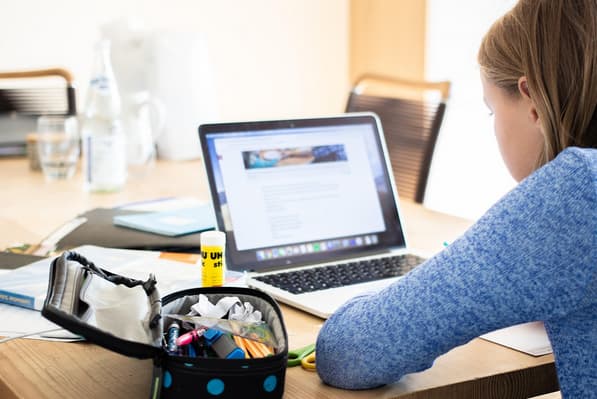Inclusive education is not just a buzzword, but a philosophy that changes the approach to learning by making it accessible and comfortable for every child, regardless of their disability, ability or background. It is a process in which school becomes a place where all children – with disabilities, from different cultures or with unique needs – learn together, grow and develop as equals. In this article, we will look at what inclusion in education is, why it is necessary and how it can be put into practice.
Why do we need inclusive education?
Equity as a foundation
Every child deserves a chance to learn and discover their talents. Inclusion removes barriers that may arise because of physical, intellectual or social differences. It’s not just about ‘including’ everyone in the same system, but about creating an environment where everyone feels part of the whole.
Developing empathy and cooperation
When children with different abilities and life experiences learn together, they learn to understand each other. This fosters not only tolerance, but also the ability to work in a team, respect differences and find common ground. Such skills are invaluable in today’s world.
Benefits for all
Inclusion not only helps children with special needs, but also enriches the experience of all students. For example, cooperative learning develops children’s flexibility of thinking and ability to adapt to different situations, which has a positive impact on their academic and personal achievements.
What is inclusive education in practice?
Inclusion is not just about putting all children in the same classroom. It is a holistic approach that includes:
- Physical accessibility: Schools should be adaptable for all, from ramps to adapted learning materials.
- Flexible learning: Curricula should be tailored to individual needs, whether that means extra tasks for gifted children or simplified materials for those who need support.
- Teamwork: Teachers, psychologists, paraprofessionals and parents must work together to ensure the success of each child.
- Culture of respect: The school must become a place where diversity is not just tolerated, but valued and celebrated.
Challenges to inclusion
- Limited resources
Many schools face a lack of funding, equipment, or expertise. For example, small towns may not have tutors or technology to support children with special needs.
- Misunderstandings and stereotypes
Some teachers and parents believe that inclusion can ‘slow down’ the learning of children without special needs. These fears often arise from a lack of knowledge or experience of working in an inclusive environment.
- Cultural sensitivities
In some societies, people with disabilities or other characteristics still face prejudice. This creates additional barriers to their inclusion in schools.

Practical steps for realizing inclusion
1. Educating teachers
Teachers are key actors in inclusive education. They need to be trained to work with diverse groups of learners. This may include:
- Workshops on creating adaptive lessons.
- Training in the use of technology, such as text reading programs or interactive whiteboards.
- Practice in interacting with children with autism, dyslexia, or other disabilities.
2. Accessible infrastructure
Schools must be physically accessible to all students. This includes not only ramps, but also:
- Audio and visual materials for children with hearing or visual impairments.
- Ergonomic furniture for children with physical disabilities.
- “Quiet zones” for students who need respite from sensory overload.
3. Curriculum adaptation
Curricula should be flexible. For example:
- For a child with dyslexia, you can use larger spaced fonts or audio lessons.
- For a student with autism, visual schedules or clear instructions.
- For gifted children – additional tasks that develop their potential.
4. Working with families
Parents are an important part of the inclusive process. Schools can:
- Hold regular meetings to discuss children’s successes and difficulties.
- Organize trainings for parents to better understand the principles of inclusion.
- Create communities where families can share their experiences.
5. Technology as an assistant
Modern technology opens up new possibilities for inclusion:
- Adaptive devices: For example, tablets with programs to read text aloud.
- Interactive platforms: Apps that make learning playful and accessible.
- Distance learning: For children who cannot physically attend school.
6. Building an inclusive culture
School should be a place where every child feels safe. This can be done through:
- Lessons about the value of diversity.
- Collaborative projects where children work in mixed groups.
- Activities that emphasize everyone’s uniqueness, such as cultural festivals or talent days.
Successful examples of inclusion
Sweden
In Sweden, inclusion is embedded in the educational system. Schools use individual development plans and teachers work closely with psychologists and social workers to support each student.
Australia
In Australia, schools use a ‘differentiated learning’ approach, where lessons are initially designed to meet different levels of learning and needs. This allows each child to learn at their own pace.
Local success
In some rural schools in Indonesia, local teachers are creating inclusive classrooms using improvised materials and creative approaches such as teaching through songs or games to integrate children with different abilities.
The role of technology in inclusion
Technology is a powerful tool for inclusion. For example, artificial intelligence can create personalized learning materials and virtual reality can help children with physical disabilities to participate in ‘live’ lessons. It is important that schools have access to these tools and train teachers to use them.
How do I know inclusion is working?
The success of inclusion can be measured by:
- Pupil activity: Children with special needs participate in school life on an equal basis with others.
- Emotional well-being: Pupils feel accepted and confident.
- Parental feedback: Families see their children’s progress and are happy with the school environment.
- Professional development of teachers: Teachers are confident in using inclusive practices.
Conclusion
Inclusive education is not just a way of learning, but a step towards creating a world where everyone matters. It is a process that takes time, resources and a change of mindset, but the results are worth it. When schools become places where every child is respected and supported, we not only give children equal opportunities, but also build a society based on acceptance and cooperation. Inclusion is a challenge but also an opportunity to make the world a better place, starting in the classroom.
